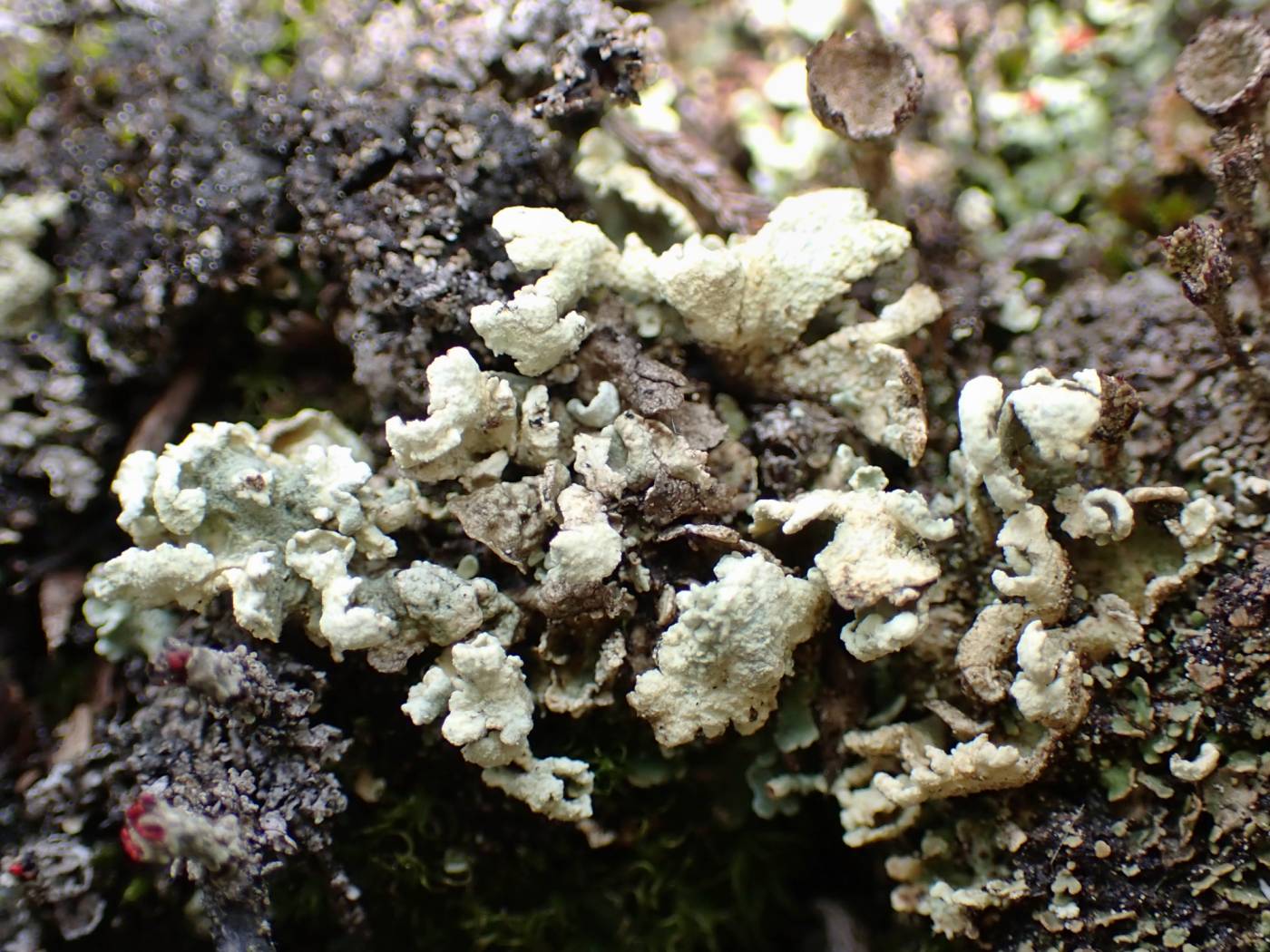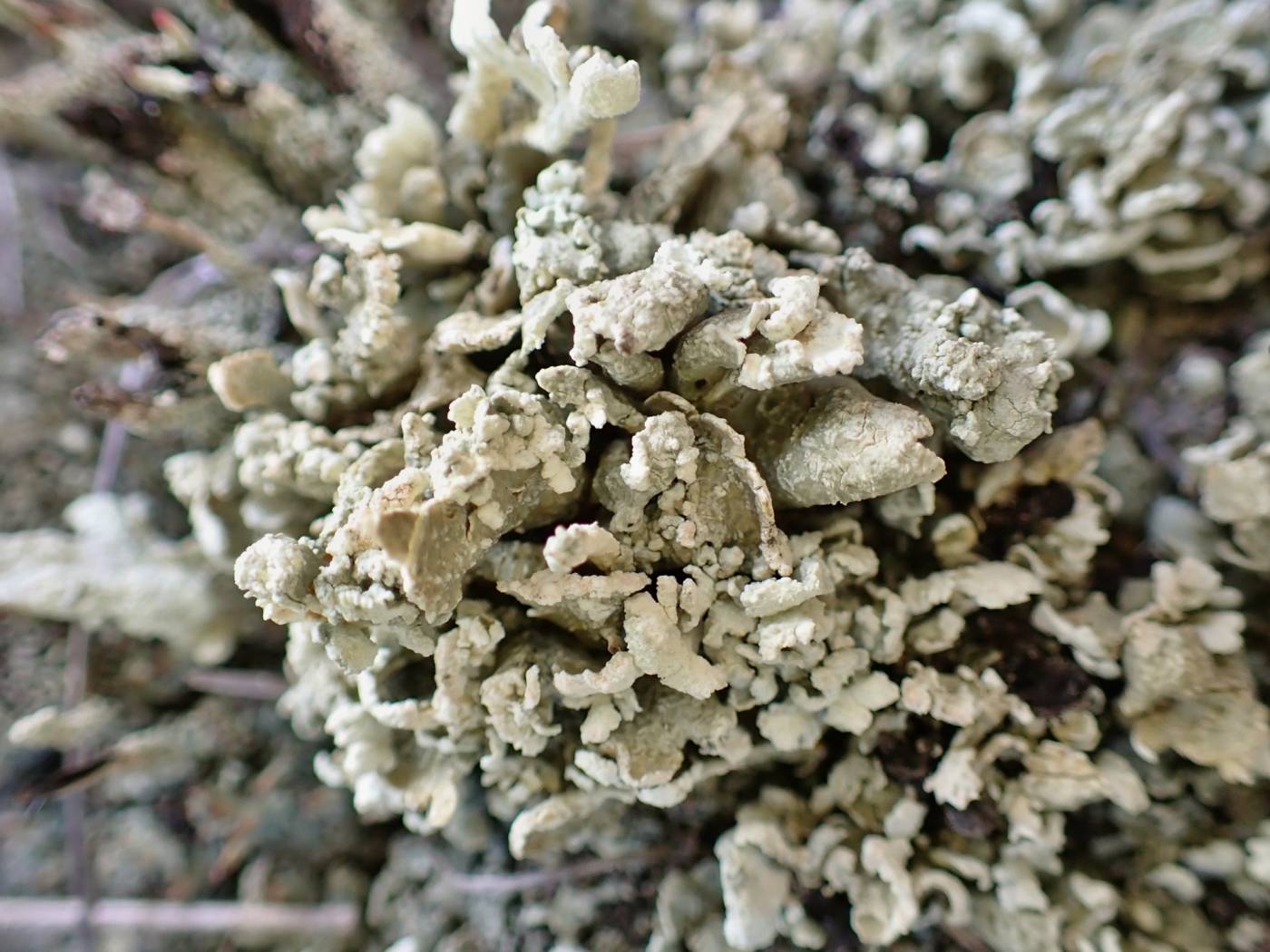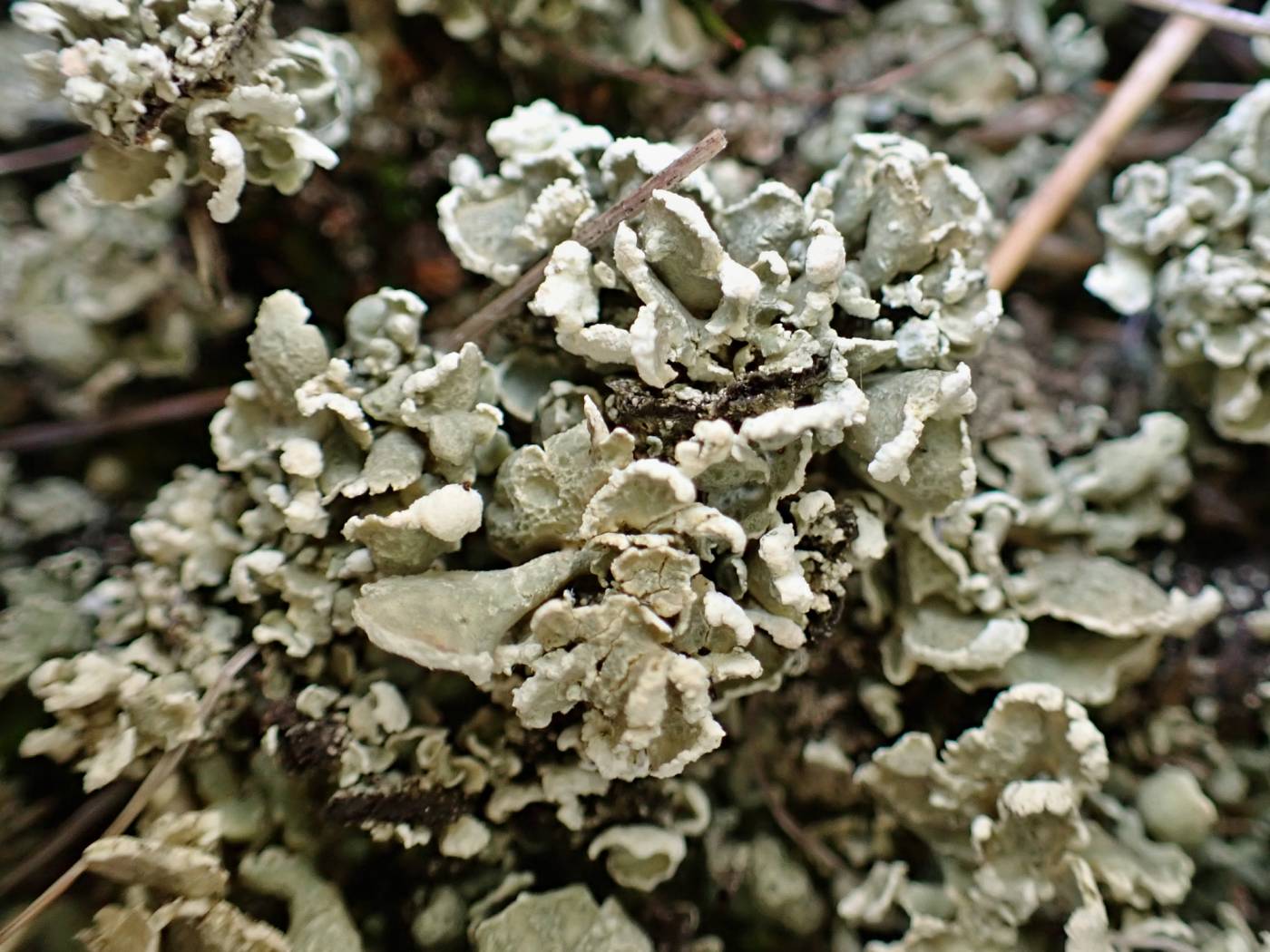Cladonia luteoalba is a red-fruited species but only rarely forms podetia and fruiting bodies. The thallus is dominated by primary squamules with a yellow soft arachnoid underside, which is yellow due to the usnic acid content. When dry, the squamules recurve, exposing the underside.
The lichen most commonly grows on acidic soil, humus, plant debris, rocks and stones in open habitats, like screes and mountain treeless zones. It has an arctic-alpine distribution range with oceanic tendencies. Except for arctic areas, it is rare in Europe, only scattered in the central part of the continent. Approximately ten localities are known in the Czech Republic, including mountain screes in the Krkonoše, Šumava and Novohradské hory Mts.
Interestingly, C. luteoalba is associated with other red-fruited species of the C. coccifera group and has variable thallus chemistry that corresponds to the associated species. One of the hypotheses explaining the phenomenon suggested by Stenroos (1990) was that C. luteoalba parasites other Cladonia species when young. Recently, the DNA sequences of mycobionts and photobionts of C. luteoalba were shown to correspond to the “host” species. Thus, C. luteoalba might actually represent a form induced, e.g., by an unknown fungus parasiting thalli of the C. coccifera agg. (Černajová et al. 2022).
Literature: Stenroos S. (1990): Cladonia luteoalba ‒ an enigmatic Cladonia. ‒ Karstenia 30: 27‒32. Liška J., Palice Z. & Bayerová Š. (1999): Cladonia luteoalba a C. norvegica ‒ nové dutohlávky pro ČR. ‒ Bryonora 23: 4‒7. Černajová I. Steinová J. Škvorová Z. & Škaloud P. (2022): The curious case of Cladonia luteoalba: no support for its distinction. ‒ Lichenologist 54: 345‒354.
taxonomic classification:Ascomycota → Lecanoromycetes → Lecanorales → Cladoniaceae → Cladonia
Red List (Liška & Palice 2010):DD – data deficient
Red List (Malíček 2023):NE – not evaluated
Occurrence in the Czech Republic
All records: 20, confirmed 18. One click on a selected square displays particular record(s), including their source(s).




